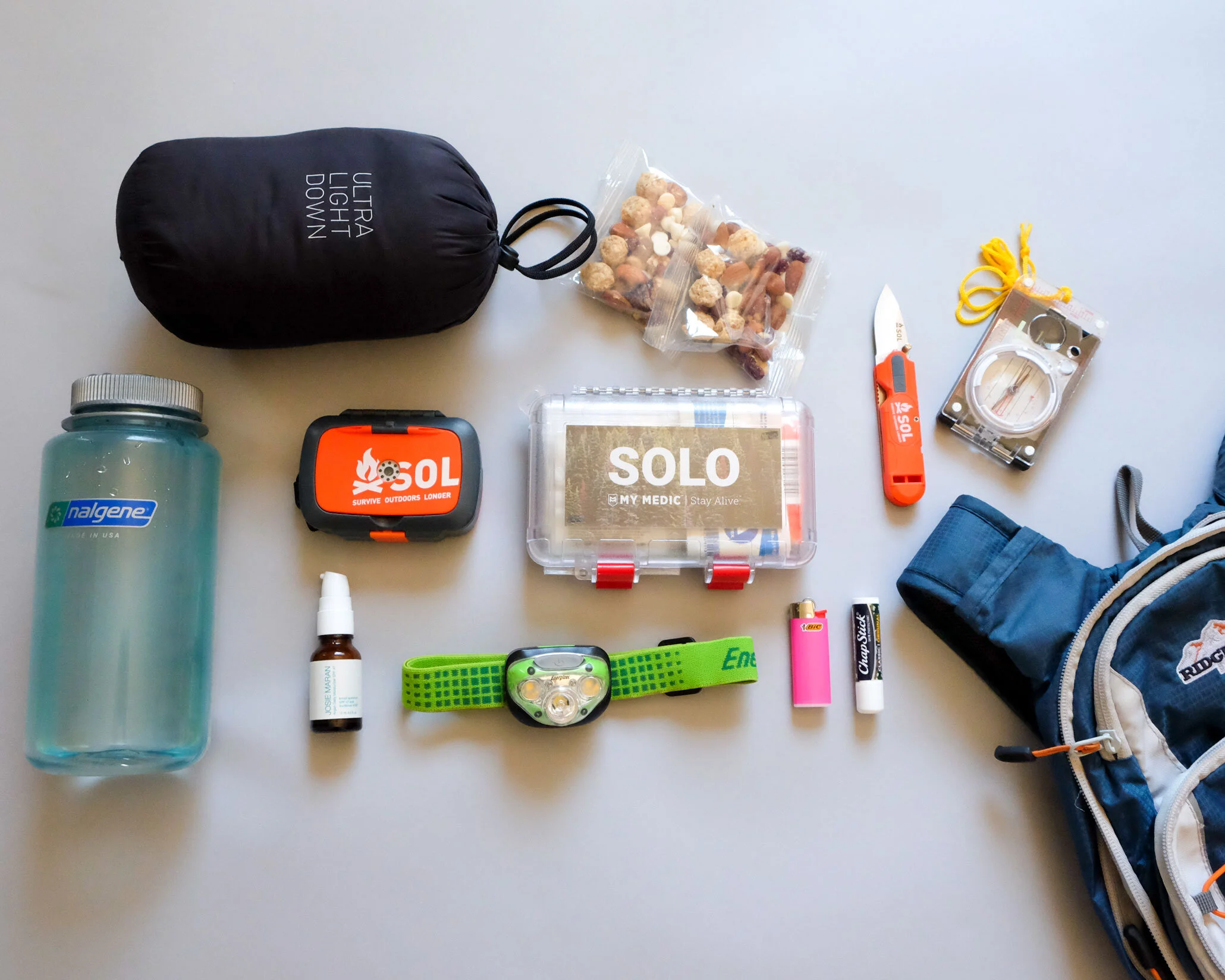THE 10 ESSENTIALS
A guide to the ESSENTIAL GEAR for hiking, backpacking and camping
So, What exactly are the 10 essentials?
The 10 Essentials is a list originally created by the Mountaineers Organization in the 1930s. Its purpose was to aid outdoor adventurers in preparation for an emergency. The list originally included individual items, but has since been updated to a set of “systems”. This way, you fill each system bucket depending on the extent of your outdoor activity. For example, in the Navigation Category, you might bring just a map for a day hike, versus a backpacking trip you might bring a GPS device in addition to a map and compass. Short of a well marked path, or well trafficked city hike that you know like the back of your hand, I would encourage you to bring the 10 Essentials in some capacity on all hikes and camping.
The below list dives into each system and makes my recommendation for a solid day hike. Absolutely, some of these items would be used for backpacking or more involved trips, but please be sure to update your systems where applicable.
NAVIGATION
A must in some way, shape, or form! Types of Navigation include:
paper map
your phone
For day hiking, I review the hike and download the map from All Trails app on my phone. I also save screenshots of any navigation tips I find in my research. For backpacking I would recommend a GPS device. If we are visiting a national park or anywhere with a visitor’s center I will check in and grab a paper-map as well. I am not the best at reading paper maps, but I aspire to get better and practice will only help.
2. HEADLAMP
I hate to admit the amount of times I have almost needed a headlamp. From getting a late start, to underestimating the length of a hike, headlamps have more than earned their keep as an “essential” for me. I think the biggest mistake some new hikers make (I know I did) is understanding when the sun goes down. And further, understanding where and when the sun goes down on your hike! Just because the sun sets at 6pm in LA doesn’t mean the sun will set at 6pm on the mountain. Combine thick or piney forrest, and night will be coming in hot.
Don’t forget to test the headlamp before leaving and bring extra batteries, too!
3. SUN PROTECTION
Forms of sun protection I bring on every hike:
Wearing layers- usually a tank, t-shirt and long sleeve button up
Travel size sunscreen- I always start with some on my face and any exposed body parts, then reapply as I get higher in elevation. Even if you’re in dense forest part of the way, the sun will find ya! I like natural sunscreens and use the Josie Maran one pictured here.
Sunglasses- I don’t always keep them on, but am always glad I have them
Hat / Visor- I can’t believe I ever hiked with out one.
Buff- can be worn in a plethora of ways. My husband for example, wears it to protect the back of his neck.
4. FIRST AID
My own first-aid kit isn’t the the most compact item, but I know the day I don’t bring it will be the day I need one- Murphy’s Law! The main items I am looking for in a First Aid kit include band aids, scissors and tweezers, antiseptic spray and burn spray. At the absolute minimum I have band aids. Nearly every hike I’ve done, me or someone I’m with has needed one.
Try finding a kit thats waterproof, or put the kit in a stuff sack that will make it a little harder for water to get into.
7. SHELTER
Having an emergency shelter can be as simple as a large trash bag for a day hike. Even better would be an emergency blanket. It weighs next to nothing and shouldn’t take up much room in your pack. Emergency shelters are going to help protect you from some of the elements, like wind and rain. For more extensive hikes or backpacking having an ultralight tarp works, or bivy sack.
9. EXTRA WATER
I aim to bring a liter more of water than whats expected. Most recommendations say a half liter of water for every hour of hiking. I have a 2 liter hydration backpack that I fill in addition to taking a 1 liter Nalgene.
Additionally, you should have a way to purify water. There are many options these days from iodine pills to filtering straws. Note that the iodine tablets are easy to pack but it usually takes 30 mins to purify water before drinking. Taking a life straw will take up more room in your pack and is a more costly option, but you can drink water faster.
I’ll never forget my first hike in the Rockies where we came across a couple so parched and asking all the other hikers they came across for if they had a way to purify water. We gladly handed over a few of the iodine tablets we had on hand!
10. EXTRA CLOTHING
To start, dressing in layers is always smart! In addition, having items like rain gear, extra socks or layers can be smart. Things like gloves or a warm hat may be necessary depending on the type of hike. I like carrying an extra light down jacket that stuffs down and fits compactly in almost any pocket of my day pack. It also weighs next to nothing.

















